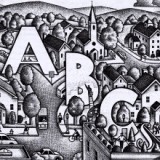U is for Urban Sprawl
The term “urban sprawl” commonly denotes a condition of unplanned, uncoordinated, and generally low density development spreading outward from the city center. Sprawl is not just a modern phenomenon. In a sense, American sprawl began…

